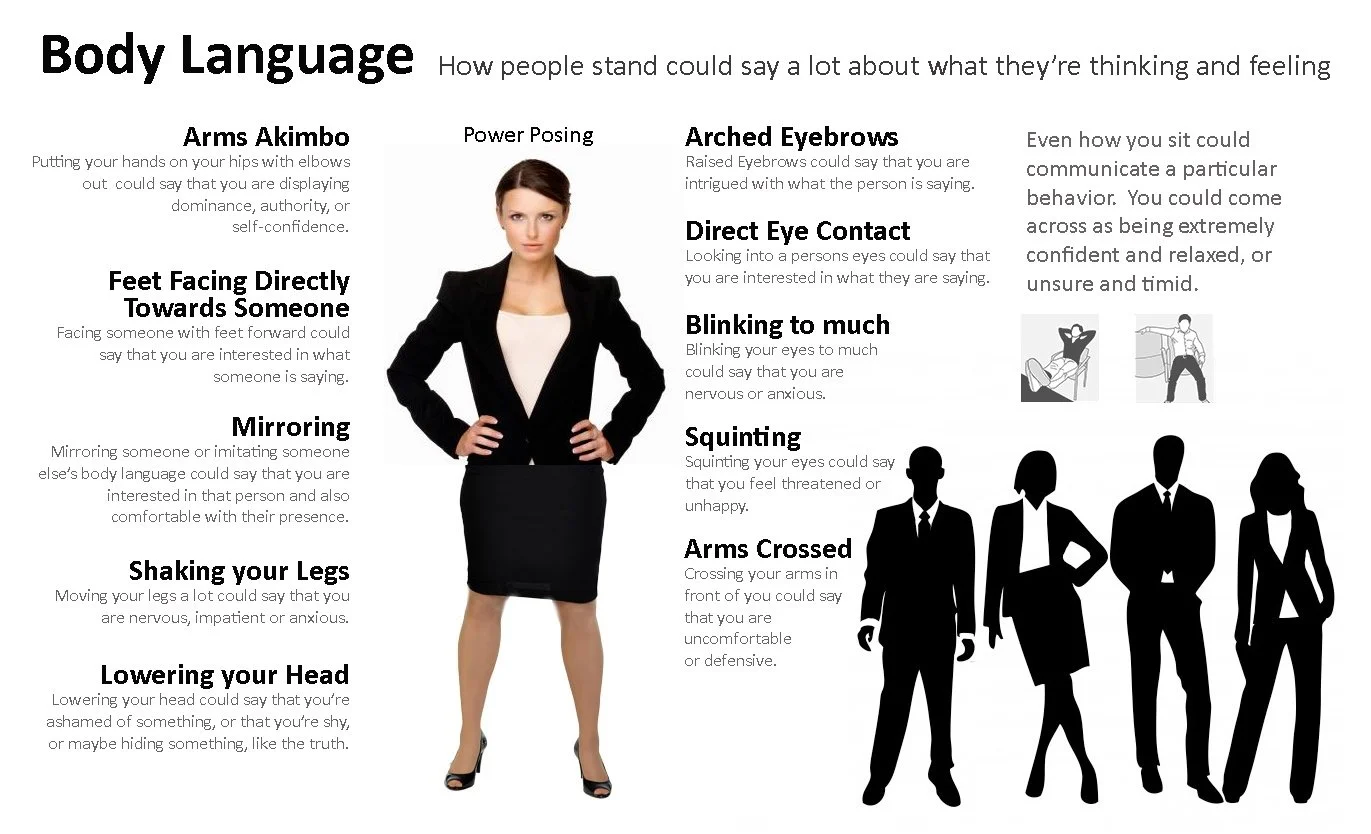The Importance of Nonverbal Communication
Studies have shown nonverbal communication make up over 55% of interpersonal communication.
Paying attention to nonverbal signals can boost your reputation in the workplace.
After majoring in communication for 6 years and I realized just how important it is to have strong communication skills.
The three components that make up communication is verbal, written and nonverbal.
Here are 4 nonverbal elements to be aware of when communicating are the following:
Eye contact- The right amount of eye contact can determine the level of trust. However too much can come off as confrontational or intimidating.
Tone - Your voice, speech, pitch and speed of talking can say a lot. It can determine whether you are enthusiastic, disinterested or angry.
Posture- The way you stand, sit or place your arms and hands can show confidence or insecurity.
An example if you are presenting to a team and your are standing and place your fingertips together this is a symbol of authority. Whereas if your arms are cross this can signal you are closed off or protective.
4.) Gestures-Your body movements such as nodding, facial expressions, blinking or shaking hands can signal whether someone is engaged or if their connection with you is off.
An example would be a simple handshake. If someone shakes your hand firmly it signals connection and trust. Whereas if someone cupped their hand or gave you a weak handshake it would make you question their connection and level of trust.
It is also important to realize these are all most important in the context of which the event occurs.
Paying attention to unspoken signs or incongruent behaviors are a resourceful way to understanding people’s true intentions. These are signs many people usually ignore.
Research as shown when people fail to match up with their nonverbal signals these can be instances where people can be lying.




